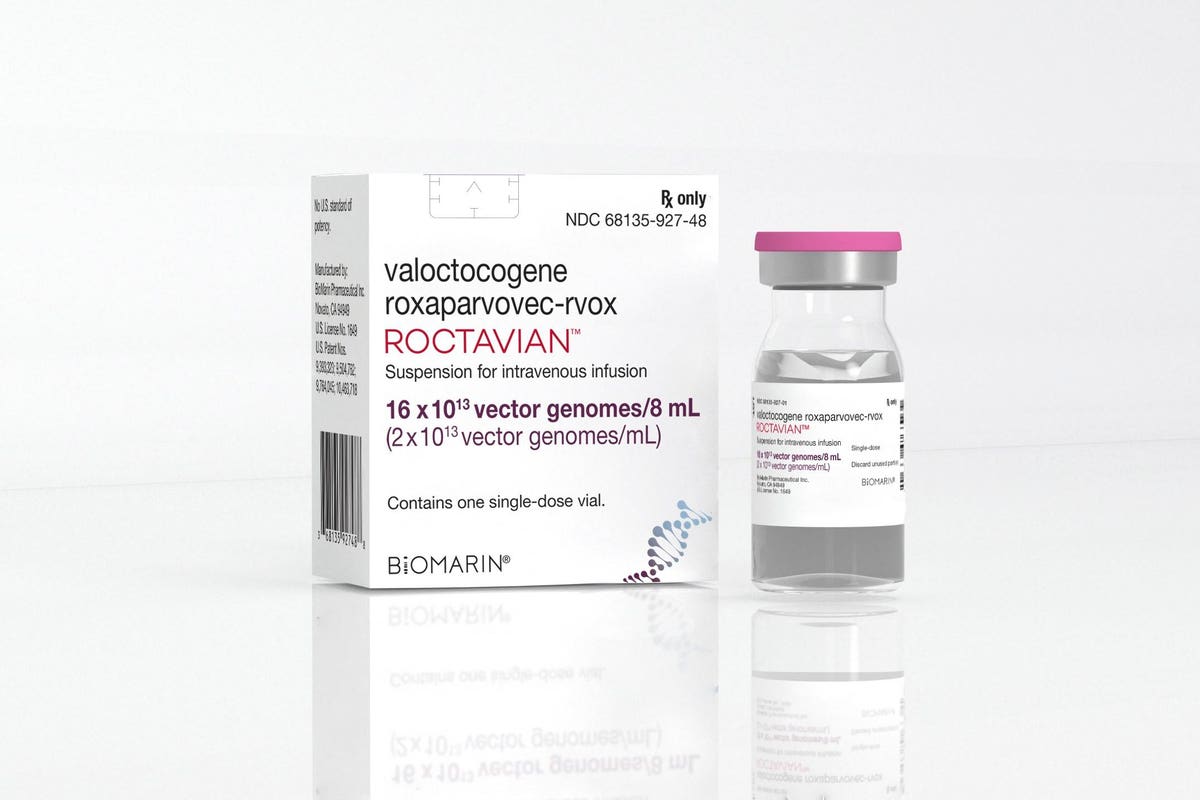After quite the regulatory process, with Roctavian (valoctocogene roxaparvovec) BioMarin has a potential blockbuster. On June 29th, Roctavian became the first gene therapy approved in the U.S. in the hemophilia A space.
Listed at $2.9 million per single-use, Roctavian is also one of the most expensive therapies ever approved. Now the company turns to the difficult task of commercializing the product. Offering warranties may be a viable option.
The biopharmaceutical company BioMarin has been at the forefront of cutting edge innovation for a long time. It has carved out a niche in the rare diseases market, specifically with respect to multiple enzyme disorders affecting particularly small orphan populations. Now it has an approval in an indication—hemophilia A—with a considerably larger population, albeit still relatively rare.
Hemophilia A is an X-linked genetic disorder caused by a missing or defective clotting protein known as Factor VIII. Patients suffering from hemophilia A often experience spontaneous bleeds.
Roctavian is administered to a patient via a one-time infusion into the bloodstream that restores production of Factor VIII. Responding to treatment implies no longer needing to receive regularly recurring prophylaxis treatment with Factor VIII replacement.
Phase 3 trial findings demonstrated that Roctavian reduced the average annualized bleed rate by 80% from baseline, and Factor VIII usage by 94% in year three compared to baseline. In addition, 92% of the 134 persons who participated in the trial were off prophylaxis by the end of year three.
The cost-effectiveness watchdog, the Institute for Clinical and Economic Review (ICER), concluded that at a price of $2.5 million Roctavian could be cost-effective. In a draft evidence report, ICER calculated the lifetime cost per patient of managing hemophilia A using a one-time dose of Roctavian versus the monoclonal antibody Hemlibra (emicizumab), which was launched in 2018.
The $2.9 million price tag is higher than $2.5 million. Yet, given that many hemophilia A patients will have their therapies administered in 340B-eligible treatment centers, this implies 340B discounted prices of perhaps 30% or more.
But, despite the relatively favorable clinical- and cost-effectiveness data and lower net price, the still very high upfront per-patient costs can be a difficult hurdle for payers to overcome.
BioMarin has indicated that outcomes-based agreements will be in the offing, as they’ve already been in Europe where the product was approved last year. In Germany, BioMarin is now working directly with the National Association of Statutory Health Insurance Funds to finalize access. The company is also currently in pricing and reimbursement negotiations with the relevant authorities in France and Italy.
One of the key commercial obstacles for gene therapies is figuring out the appropriate reimbursement model for drugs that could be one-time treatments. Questions around the durability of novel gene therapies persist and remain a potential sticking point for negotiating reimbursement agreements with payers.
A Warranty Construct
While it may make sense to implement a mortgage-style payment system for gene therapies, spread out over time and with refunds in place if certain predetermined outcomes aren’t met, payers in Europe and the U.S. have thus far been reluctant to embrace this particular concept.
In lieu of this, BioMarin plans to offer a warranty in the U.S. to avoid having to negotiate outcomes-based agreements separately with each individual payer. With a warranty, BioMarin seeks to, in its words, “simplify the process” of an outcomes-based agreement by offering a guarantee that includes a refund to the payer if a patient treated with Roctavian has to revert to prophylaxis treatment within a four year period. The question is straightforward, according to BioMarin’s CEO Jean-Jacques Bienaimé, “is the patient back on prophylaxis or not?”
Though BioMarin has not provided the precise terms of the Roctavian warranty, BioMarin CCO Ajer describes it like this: “You have a patient that takes Roctavian and starts bleeding at the end of year three and needs to go back on prophylaxis; they have consumed 75% of the value of a four-year agreement, so we would refund back 25% of the value of Roctavian.”
The warranties provide a refund to healthcare payers, including Medicaid and Medicare insurers, should Roctavian fail to deliver the expected outcomes for a given patient.
Here, BioMarin would take out an insurance policy with a third party insurer: For example, it could do so with Marsh, a global leader in insurance brokerage and risk management, who is partnering with Octaviant Financial to develop warranties, specifically designed for cell and gene therapies.
Octaviant defines therapeutic warranties as “insurance-based instruments funded by manufacturers that provide recourse to the warranty holder if a product does not meet predefined expectations.”
The warranty holder in this case is the payer or entity that makes the decision to reimburse a therapy. It is then entitled to a refund guaranteed by the manufacturer as stipulated in the warranty policy if certain predetermined outcomes aren’t achieved.
The use of a warranty may allow companies to avoid triggering government “best price” reporting problems in Medicaid, which will likely be the predominant payer of hemophilia A products.
Medicaid’s best price policy requires drug manufacturers to provide Medicaid programs the so-called best price. Best price is defined as the lowest available price to any wholesaler, retailer, or provider, excluding certain government programs, such as Veterans Affairs. Through a refund scheme offered to one payer the best price could theoretically drop to zero and then apply across all Medicaid programs.
BioMarin CCO Jeff Ajer noted, “we have this warranty construct that gets us out of the business of having to negotiate payer by payer [and] we think gets us out of the worst problems associated with government price reporting.”
In this context, it’s possible that BioMarin will rely on recently enacted Centers for Medicare and Medicaid Services (CMS) guidance to permit multiple best prices. To facilitate the broad adoption of value-based pricing contracts (of which warranties are a special case), CMS’s rule enacted last July allows drug manufacturers to report a range of best prices to the extent that they may be determined by varying discounts under different kinds of value-based pricing (VBP) arrangements, along with the regular best price under any non-VBP arrangements.
Besides the warranties, there are more mundane issues for BioMarin to deal with, including temporary and permanent coding for reimbursement once Roctavian launches. In its earnings call earlier this year, a BioMarin spokesperson said that “we still have other critical elements of the U.S. launch to work through,” which includes “getting on formulary until we have a J code … through the medical exception process.”
As the company gets its ducks in a row to facilitate commercialization of Roctavian, we will likely hear more about how warranties could help gene therapies prevail over existing payer reimbursement hurdles.
Read the full article here




